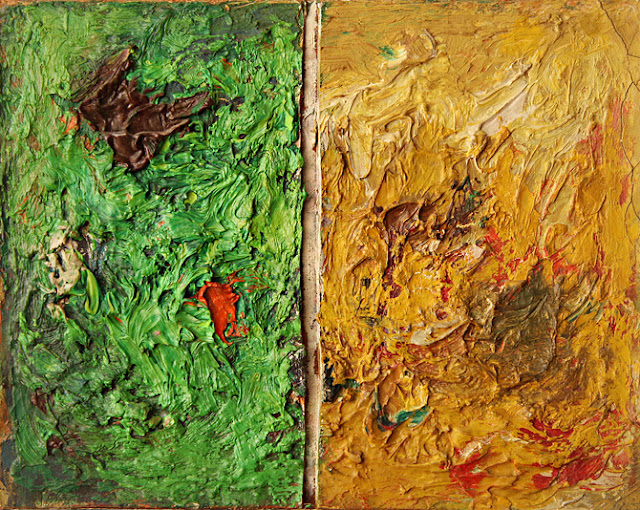Albert Kotin (August 7, 1907 – February 6, 1980) belonged to the early generation of New York School Abstract Expressionist artists whose artistic innovation by the 1950s had been recognized across the Atlantic, including in Paris.The New York School Abstract Expressionism, represented by Jackson Pollock, Willem de Kooning, Franz Kline, and others became a leading art movement of the post-World War II era.Albert Kotin was born August 7, 1907 in Minsk, Tsarist Russia and emigrated to the USA in 1908. He became a US citizen in 1923.Kotin studied: (1924–1929) at the National Academy of Design, New York City; with Charles Hawthorne, Provincetown, Massachusetts; (1929–32) at the Académie Julian, the Académie de la Grande Chaumière and at the Atelier de Fresque and the Académie Colarossi, Paris, France; (1947–1951) at The Art Students League of New York, New York City; under the GI Bill he went to study with Hans Hofmann in Provincetown and in New York City.
Kotin served in the U.S. Army military service during World War II (1941–1945).
After the war Kotin found a studio on 10th Street. He soon joined the "Downtown Group" which represented a group of artists who found studios in lower Manhattan in the area bounded by 8th and 12th street between First and Sixth Avenues during the late 1940s and early 1950s. These artists were called the "Downtown Group" as opposed to the "Uptown Group" established during the war at The Art of This Century Gallery. In 1949 Kotin joined the "Artists' Club"located at 39 East 8th Street. Albert Kotin was chosen by his fellow artists to show in the Ninth Street Show held on May 21 – June 10, 1951.The show was located at 60 East 9th Street on the first floor and the basement of a building which was about to be demolished. "The artists celebrated not only the appearance of the dealers, collectors and museum people on the 9th Street, and the consequent exposure of their work but they celebrated the creation and the strength of a living community of significant dimensions." Wikipedia
Kotin served in the U.S. Army military service during World War II (1941–1945).
After the war Kotin found a studio on 10th Street. He soon joined the "Downtown Group" which represented a group of artists who found studios in lower Manhattan in the area bounded by 8th and 12th street between First and Sixth Avenues during the late 1940s and early 1950s. These artists were called the "Downtown Group" as opposed to the "Uptown Group" established during the war at The Art of This Century Gallery. In 1949 Kotin joined the "Artists' Club"located at 39 East 8th Street. Albert Kotin was chosen by his fellow artists to show in the Ninth Street Show held on May 21 – June 10, 1951.The show was located at 60 East 9th Street on the first floor and the basement of a building which was about to be demolished. "The artists celebrated not only the appearance of the dealers, collectors and museum people on the 9th Street, and the consequent exposure of their work but they celebrated the creation and the strength of a living community of significant dimensions." Wikipedia











No comments:
Post a Comment